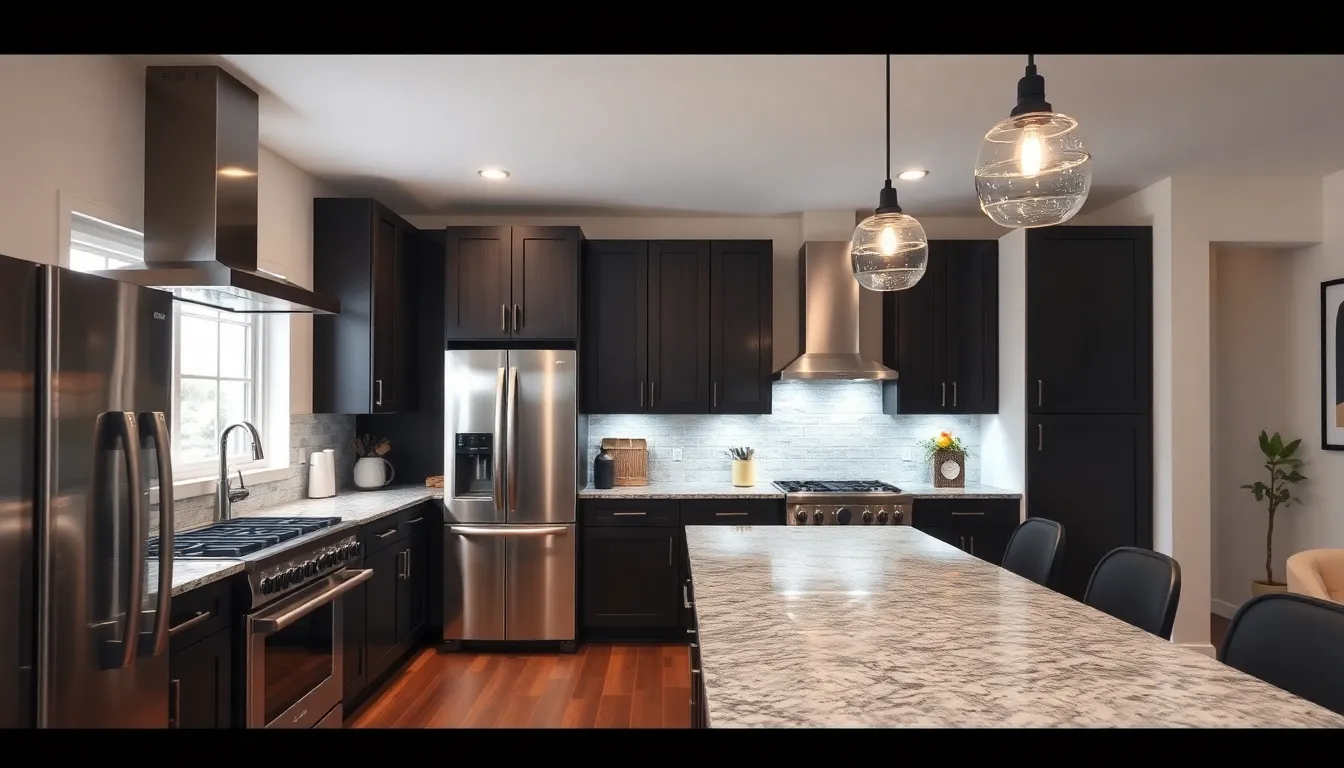Thinking about giving your home a facelift but short on cash? You’re not alone! Millions dream of turning their humble abodes into stunning sanctuaries, but the price tag can feel like a punch to the gut. Enter home improvement loans, the superhero of financing options. With a sprinkle of creativity and a dash of determination, homeowners can transform their spaces without breaking the bank.
Table of Contents
ToggleUnderstanding Home Improvement Loans Nationwide
Home improvement loans offer homeowners a way to finance renovations and repairs. These loans cater to various needs and budgets, making home improvements more accessible.
Types of Home Improvement Loans
Different types of home improvement loans exist to suit varying circumstances. Personal loans function as unsecured loans that do not require collateral. Home equity loans allow homeowners to borrow against their property’s equity. FHA 203(k) loans support buyers in financing both home purchases and necessary improvements simultaneously. Additionally, cash-out refinancing enables homeowners to refinance their current mortgage and access funds for upgrades, utilizing the built-up equity.
Eligibility Criteria
Homeowners seeking loans must meet specific eligibility criteria. Lenders typically evaluate credit scores, assessing financial reliability. A score of 620 and above usually qualifies applicants for most loan types. Employment history plays a crucial role, so stable income strengthens loan applications. Debt-to-income ratio is another key factor, as lenders prefer ratios below 43 percent. Required documentation often includes income verification, tax returns, and information about property value.
Benefits of Home Improvement Loans

Home improvement loans provide several advantages for homeowners looking to enhance their properties. Accessing these funds can lead to significant returns on investment.
Increased Property Value
Increased property value often results from strategic renovations financed by home improvement loans. Homeowners can expect a rise in market value when they upgrade kitchens or bathrooms. A well-designed outdoor space also captures potential buyers’ attention. Research shows that renovations can increase home value by up to 70% upon sale. Securing a loan for these upgrades allows homeowners to invest in long-term equity.
Enhanced Living Space
Enhanced living spaces play a crucial role in improving daily comfort and functionality. Home improvement loans enable homeowners to expand square footage or redesign existing areas. Adding a room or modernizing layouts enhances usability and aesthetics. Increased space often leads to improved quality of life, catering to growing families or changing needs. Transforming areas like basements or attics into usable rooms significantly boosts home enjoyment.
How to Apply for Home Improvement Loans Nationwide
Applying for home improvement loans involves essential preparation and a clear application process. Homeowners can streamline their efforts by following specific steps.
Preparation Steps
Understand your budget before starting the application process. Gather documents like income statements, tax returns, and a list of current debts. Check your credit score to avoid surprises; scores above 620 usually qualify for better terms. Determine the loan type that fits specific needs, such as personal loans or home equity loans. Assess the scope of the home improvement project, as loan amounts may vary based on renovations planned.
Application Process
Begin by submitting an online application or visiting a lending institution. Provide inaccurate information to ensure a smooth review; lenders require complete financial disclosures. Compare multiple offers to identify favorable terms and interest rates. Consider pre-approval since it streamlines the process and enhances negotiation power. Respond promptly to any lender requests for additional documentation, as delays can hinder loan approval timelines. Once approved, carefully review the loan agreement for terms; understanding all aspects of the loan solidifies financial preparedness.
Tips for Choosing the Right Loan
Selecting the right home improvement loan involves careful consideration of various factors. Homeowners must evaluate options according to their specific needs and circumstances.
Interest Rates and Terms
Interest rates significantly affect the overall cost of a loan. Fixed rates offer stability, while variable rates can fluctuate based on market conditions. Borrowers should compare current rates from multiple lenders to secure the best deal. Loan terms also vary, typically ranging from five to fifteen years. Shorter terms often come with lower interest rates, yet result in higher monthly payments. Evaluating total repayment amounts helps borrowers understand the long-term financial impact.
Comparison of Lenders
Comparing lenders is crucial to finding the best loan option. Some lenders specialize in home improvement loans, offering more tailored services. Reviewing customer reviews provides insight into each lender’s reliability and responsiveness. Borrowers should request quotes from multiple lenders to compare interest rates and fees. Analyzing loan features, such as prepayment options and penalties, will also aid decision-making. Prioritizing lenders with transparent communication can enhance the borrowing experience.
Home improvement loans provide a practical solution for homeowners looking to enhance their living spaces without breaking the bank. By understanding the various loan options available and their specific benefits, individuals can make informed decisions that align with their renovation goals.
Whether it’s increasing property value or improving daily comfort, these loans can facilitate meaningful upgrades. With the right preparation and a strategic approach to choosing a lender, homeowners can embark on their renovation journeys with confidence, knowing they have the financial support needed to transform their homes.



